Ichigo Daifuku is a delightful Japanese sweet treat that combines the freshness of ripe strawberries with the chewiness of mochi rice cake and the sweetness of red bean paste. This confectionery sweet is created by wrapping a whole strawberry in sweet red bean paste, then encasing it in a layer of soft, pillowy mochi. The result is a blend of flavors and textures that are to die for!
Originating in Japan, Ichigo Daifuku is often enjoyed during special occasions such as Hanami (cherry blossom viewing) picnics, tea ceremonies, or simply as a yummy snack .
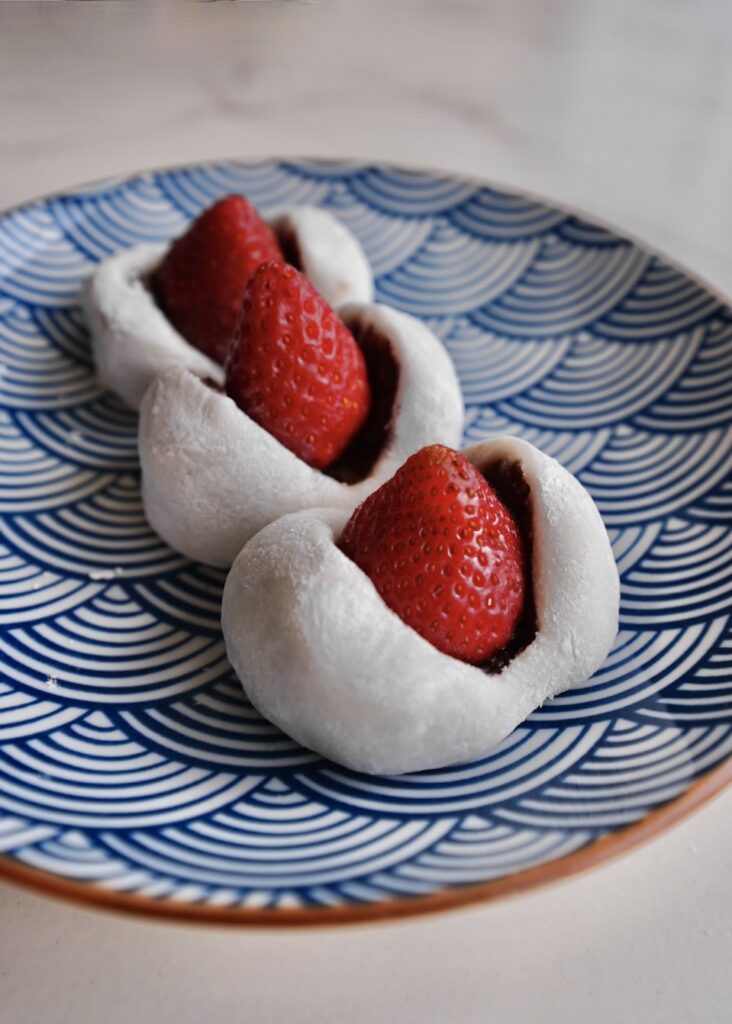
While traditionally enjoyed as a seasonal treat during strawberry season in Japan, Ichigo Daifuku can now be found year-round in Japanese bakeries, confectionery shops, and even some supermarkets. It has also inspired creative variations, with some recipes incorporating different types of fruit or flavored bean pastes to offer new and exciting flavor combinations.
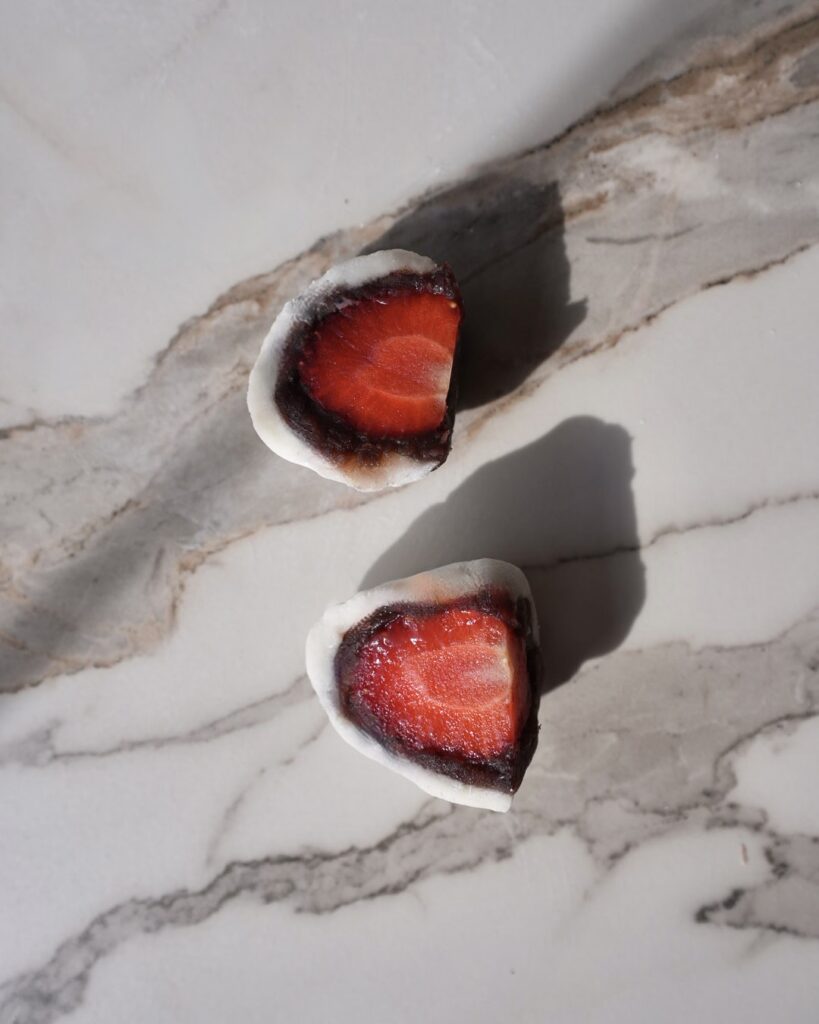
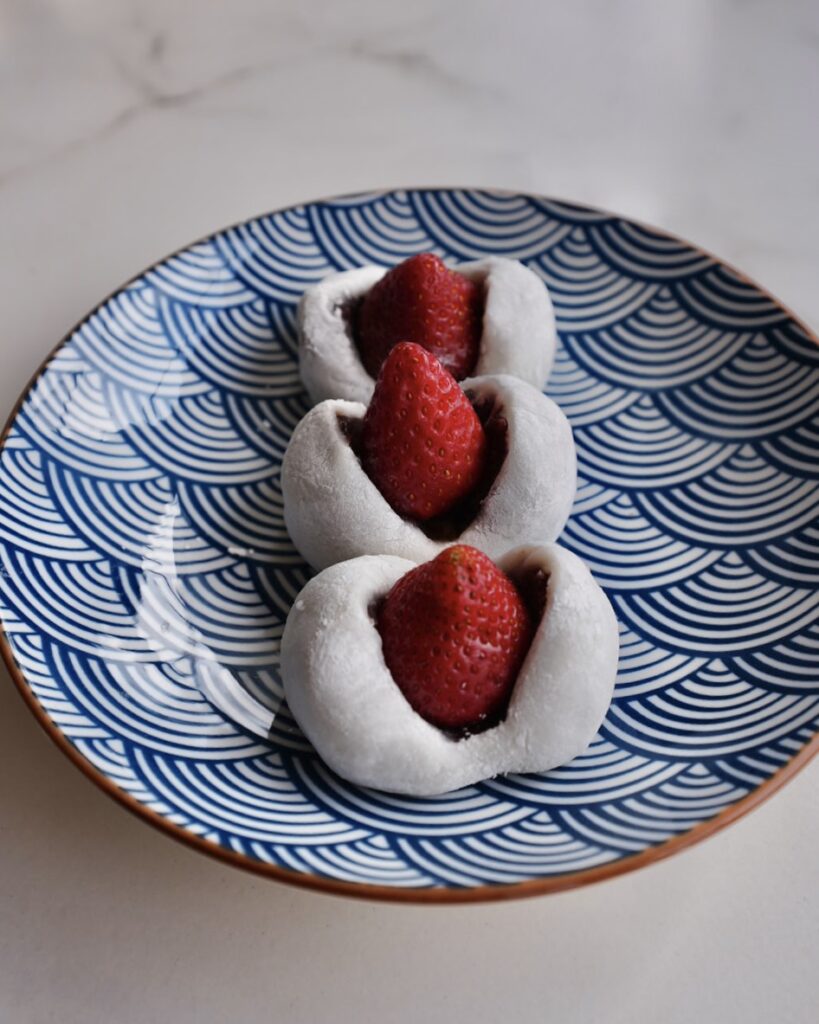
In this blog post, I share two methods for making Ichigo Daifuku:
- Concealed Ichigo Daifuku
- Exposed Ichigo Daifuku
I’ll share step-by-step instructions to create the mochi both of these ways, as shown in the pictures (FYI, the concealed ichigo daifuku pictured was cut in half to reveal the strawberry center).

Main Ingredient: Sweet Rice Flour
Sweet rice flour, also known as glutinous rice flour or mochiko, is a key ingredient in making mochi. Mochi is a chewy Japanese rice cake made from glutinous rice that’s pounded into a smooth, stretchy dough and used in both sweet and savory dishes. It’s often enjoyed during festive occasions such as New Year’s celebrations or as a yummy snack any time of the year.
Unlike regular rice flour, sweet rice flour is made from short-grain glutinous rice, which has a higher starch content, giving mochi its signature chewy texture.
When mixed with water and sugar, sweet rice flour forms a sticky dough that can be steamed, boiled, or pounded into various shapes and filled with sweet fillings like red bean paste or fruit.
Also, the best part? Sweet rice flour is gluten-free!
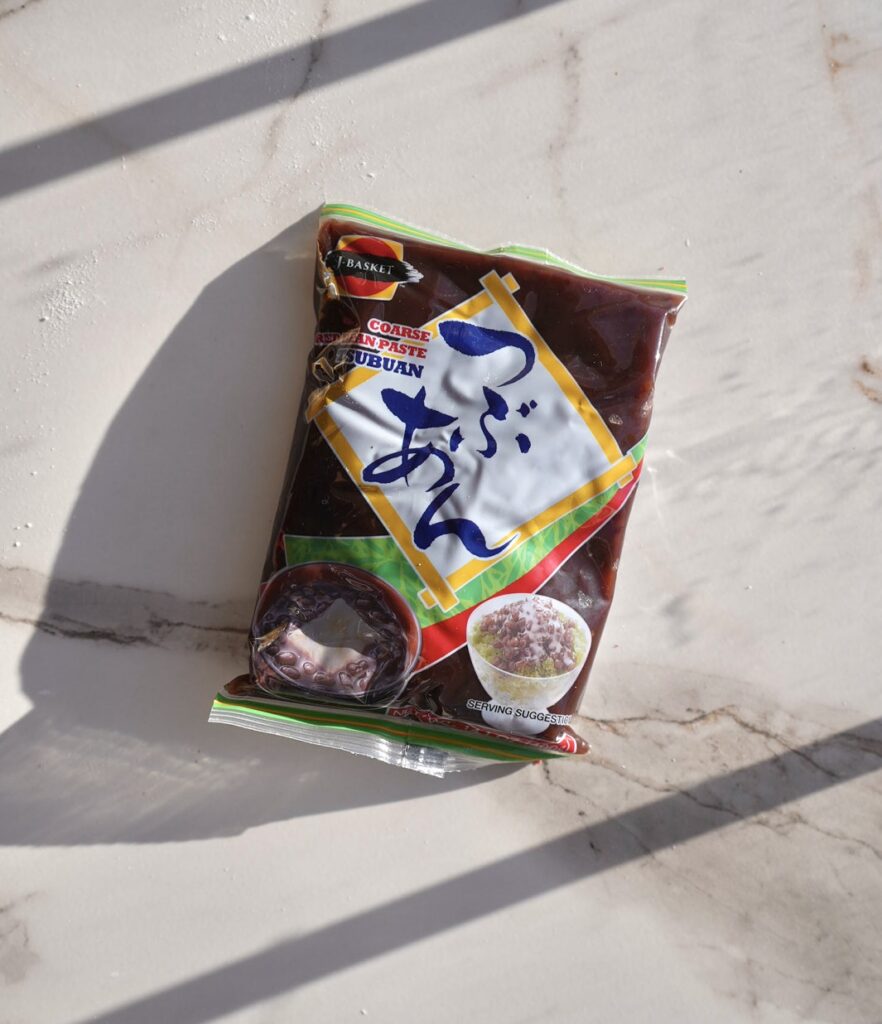
What is Anko (Red Bean Paste)?
Anko is a popular ingredient in Japanese cuisine. It’s a sweet red bean paste made from azuki beans, sugar, and sometimes salt.
Anko is commonly used as a filling in various traditional Japanese sweets like dorayaki, taiyaki, and mochi. It can be either smooth or chunky in texture and can vary in sweetness depending on the recipe. Anko has a rich, earthy flavor that pairs well with the delicate sweetness of Japanese desserts.
Love Mochi?
Check Out My Other Mochi Recipes!
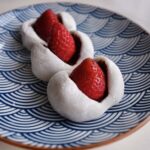
Ichigo Daifuku (いちご大福)
- Total Time: 32 minutes
Description
Ichigo Daifuku is a popular Japanese sweet consisting of a whole strawberry wrapped in sweet red bean paste and encased in a soft, chewy layer of mochi.
Ingredients
- 1 1/2 cups sweet rice flour
- 1/2 cup granulated sugar
- 1 1/2 cup water
- 1/2 cup cornstarch
- 8 small, ripe strawberries
- 1 cup red bean paste (adjust amount to your desired preference)
Instructions
Exposed Strawberry Method:
- Trim the green stems off your strawberries and wash them. Allow them to completely dry before using.
- In a medium-sized bowl, make your mochi by combining the mochiko, sugar, and water, mixing well.
- Microwave for 1 minute and the mochi should turn into a slightly more firm texture. Mix a little with a silicon spatula and microwave again for 30 more seconds. It should come out with a texture that is slightly more firm than jello.
- Coat a clean, flat surface with the cornstarch. Once the mochi has cooled for a few minutes, use a silicon spatula to lay the mochi out flat over the cornstarch.
- Sprinkle a rolling pin with cornstarch and roll the mochi out flat, about 1/4 inch thick, being careful not to tear it. Cut into 8 equal pieces.
- Roll each piece of mochi into a ball, then flatten it into a 1/4-inch thick circle using a rolling pin. This step ensures the mochi will have a smooth appearance.
- Take 1 1/2 tablespoons of red bean paste and roll it into a ball. Repeat this step until you have 8 balls of red bean paste. Place one red bean paste ball in the center of each mochi circle.
- Carefully fold the edges of the mochi over the red bean paste, pleating it to completely encase the paste. Seal at the bottom, then flip the mochi over so the seam is facing down. Gently roll the mochi into a smooth circle if needed.
- Use scissors to make a small cut down the center of each mochi ball (leave about 1/4 inch intact). Insert a strawberry (pointy side up) into the cut, placing it right where the red bean paste is exposed.
Hidden Strawberry Method:
- Trim the green stems off your strawberries and wash them. Allow them to completely dry before using.
- In a medium-sized bowl, make your mochi by combining the mochiko, sugar, and water, mixing well.
- Microwave for 1 minute and the mochi should turn into a slightly more firm texture. Mix a little with a silicon spatula and microwave again for 30 more seconds. It should come out with a texture that is slightly more firm than jello.
- Coat a clean, flat surface with the cornstarch. Once the mochi has cooled for a few minutes, use a silicon spatula to lay the mochi out flat over the cornstarch.
- Sprinkle a rolling pin with cornstarch and roll the mochi out flat, about 1/4 inch thick, being careful not to tear it. Cut into 8 equal pieces.
- Roll each piece of mochi into a ball, then flatten it into a 1/4-inch thick circle using a rolling pin. This step ensures the mochi will have a smooth appearance.
- Coat each strawberry with about 1/4 inch of anko, making sure it’s evenly spread. Once coated, place each strawberry pointy side up on a flat surface.
- Gently cover each strawberry with a piece of mochi, taking care not to tear it. Tuck the edges of the mochi at the bottom of the strawberry, ensuring it’s securely sealed.
Notes
Ichigo daifuku is best enjoyed fresh, but it can last for about 1–2 days if stored properly. To keep them fresh, wrap them individually in plastic wrap and store them in an airtight container at room temperature.
They should not be kept in the fridge, as this can change the texture of the mochi and make it harder.
- Prep Time: 30 minutes
- Cook Time: 2 minutes
Nutrition
- Serving Size: 8

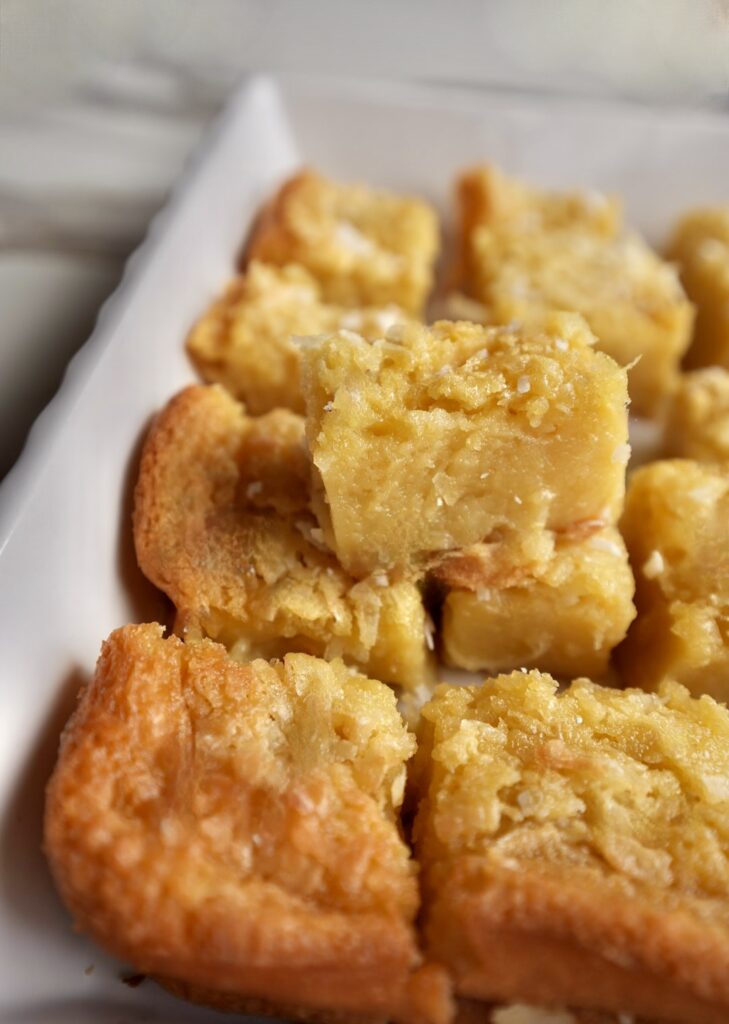
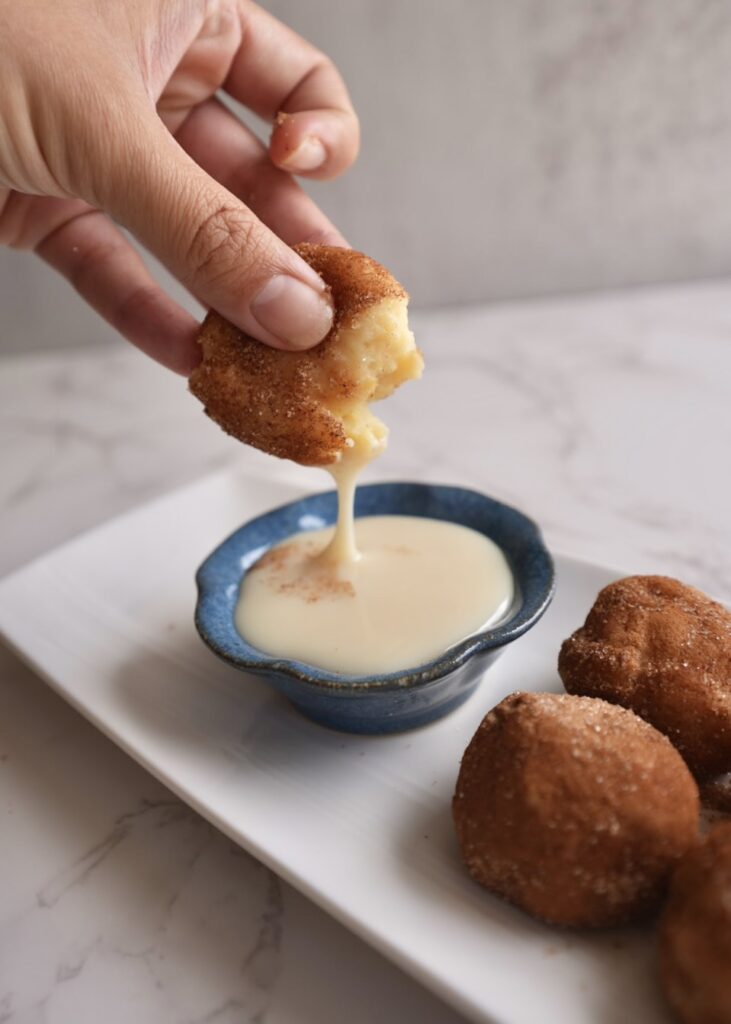
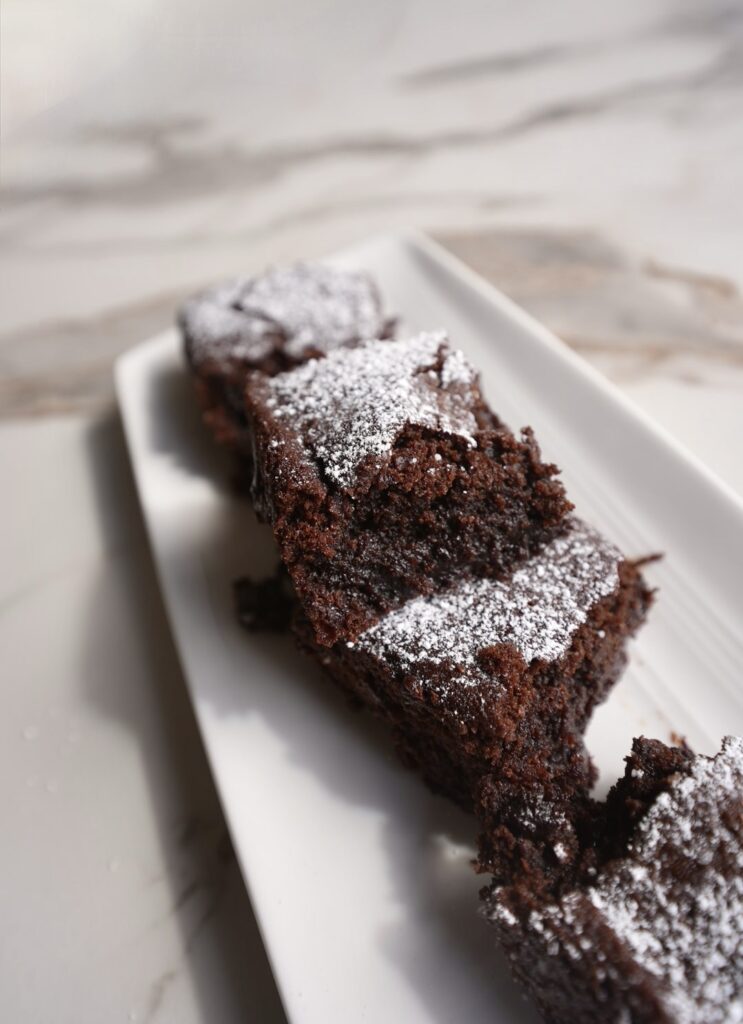



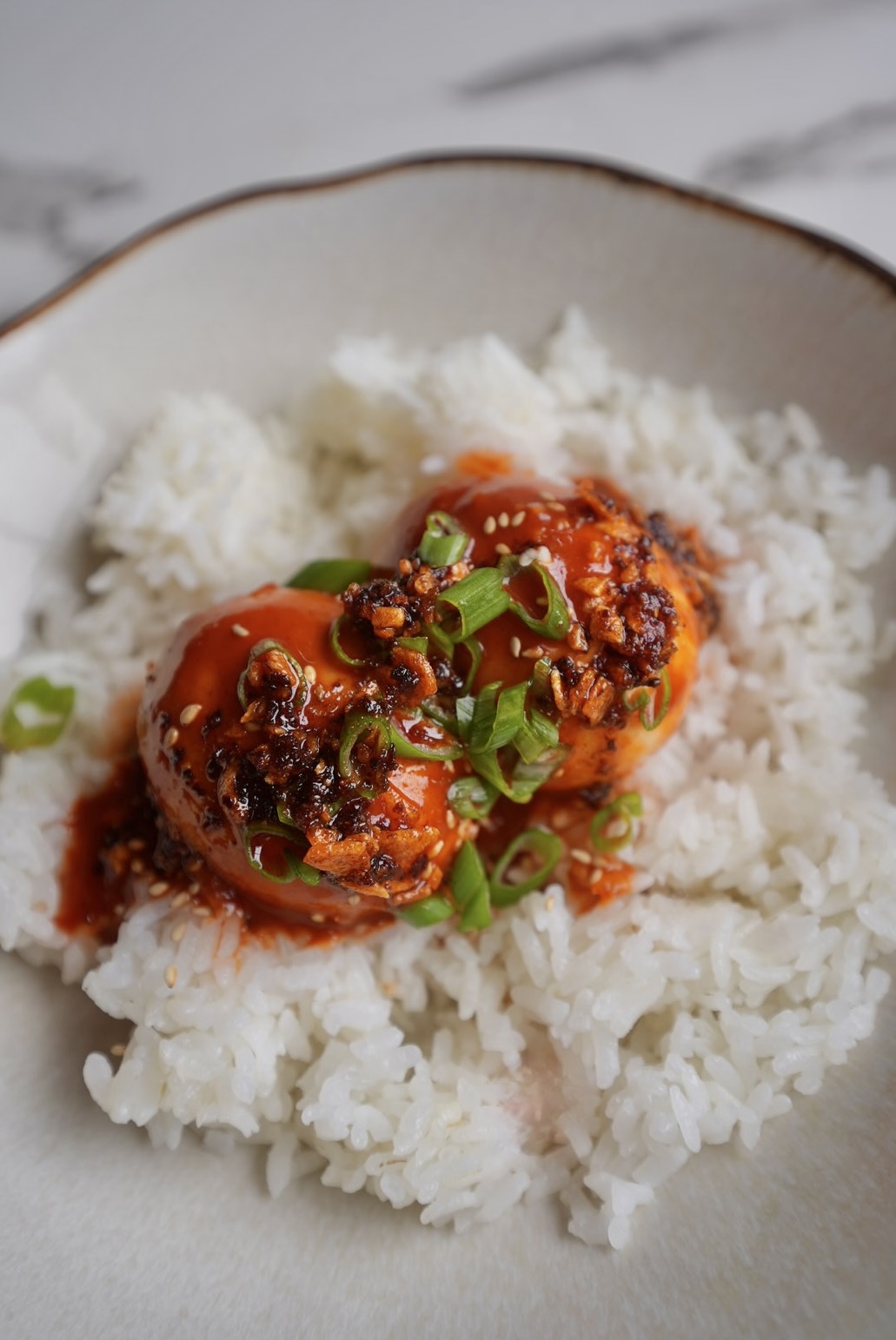
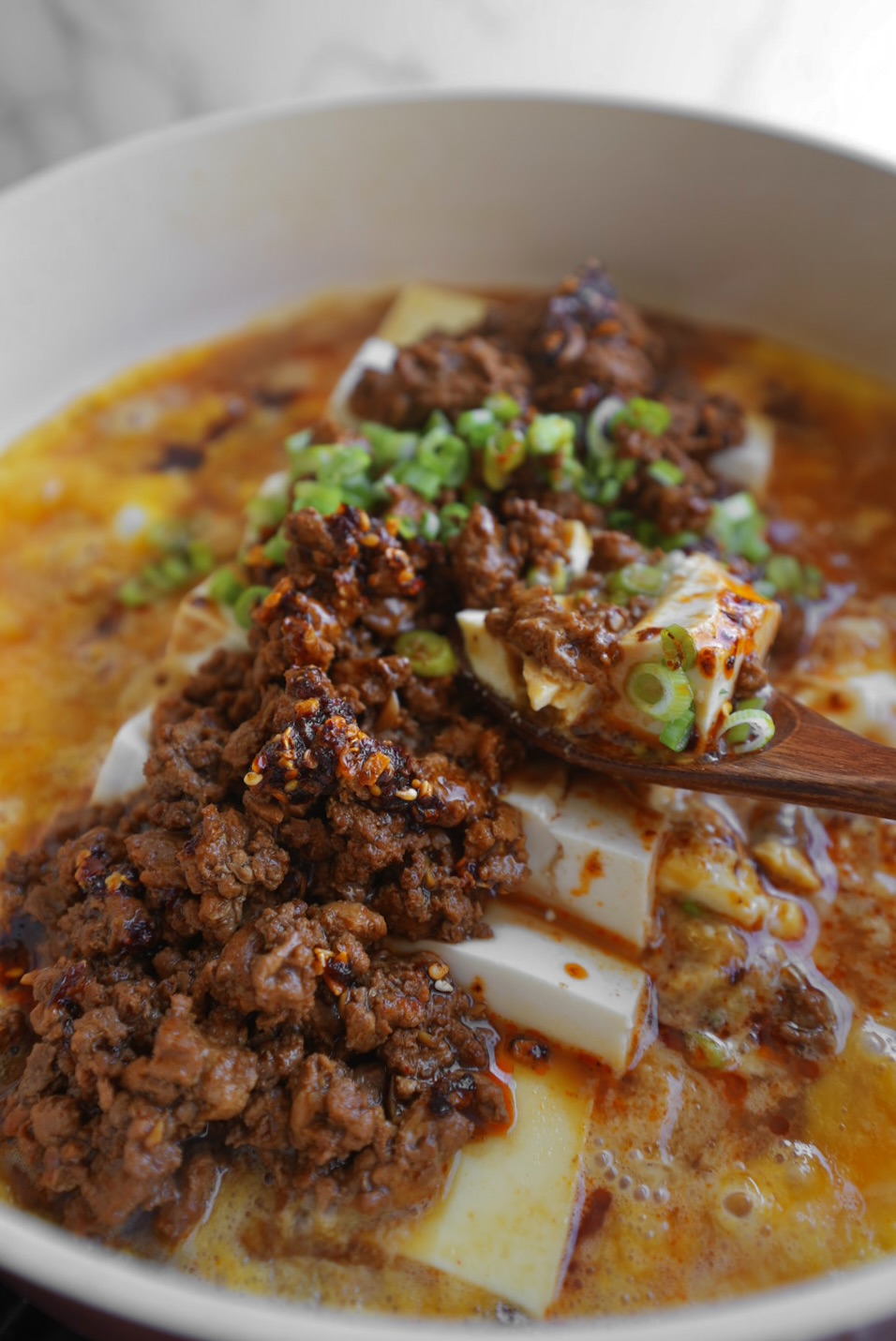
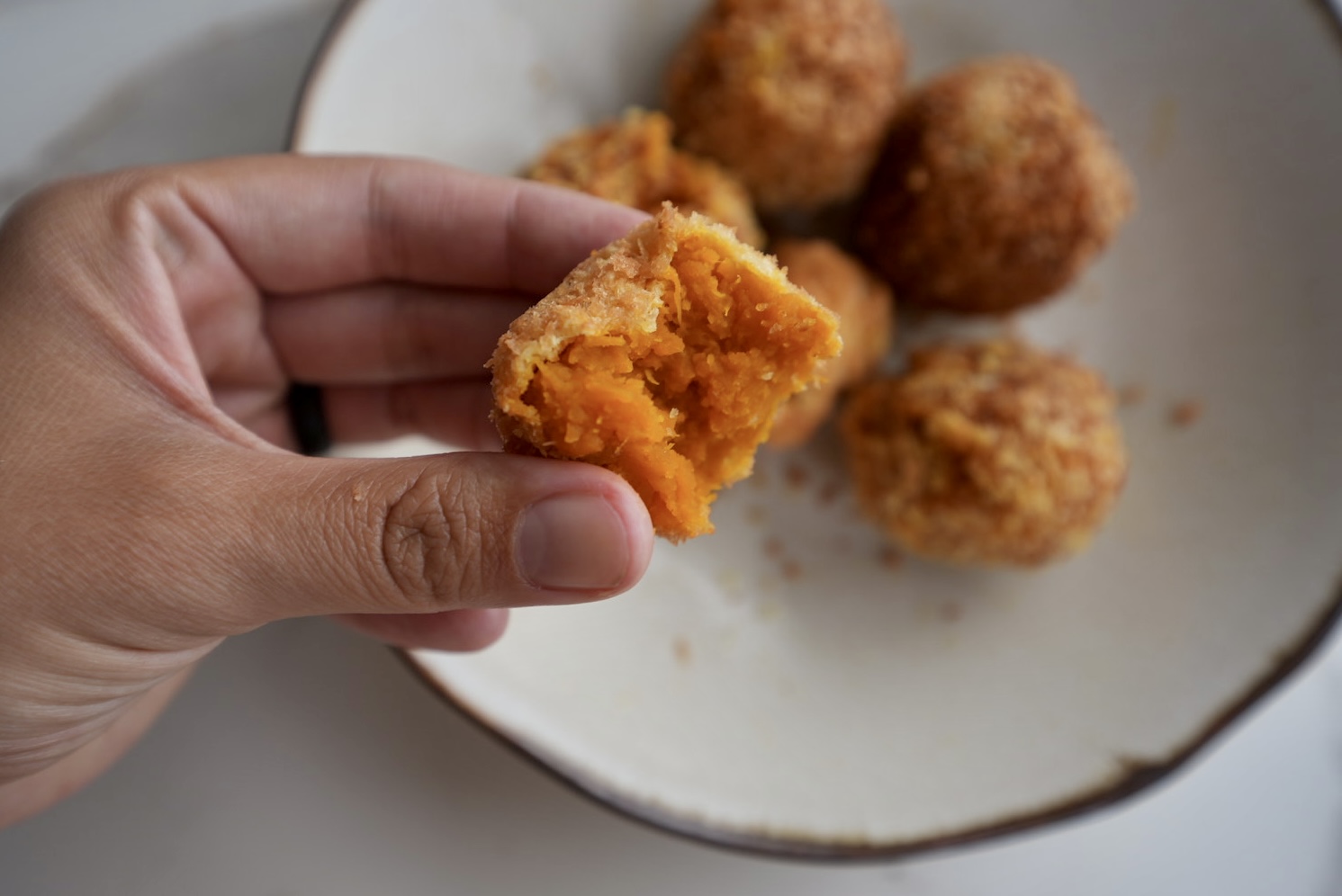
I remember getting these by a Japanese temple when I was visiting. I’m surprised by how much I like red bean paste!
That’s awesome! Authentic ichigo daifuku is the best!
Wrapping the mochi while still warm made it much easier. That tip really helped!
Oh that’s awesome! Thanks, Derrick!